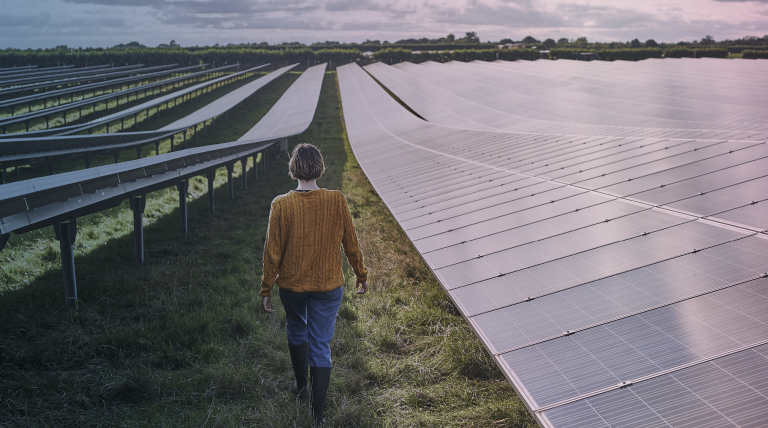For 40 years, we've been driving our country's economic and social progress. Four decades shaping Spain.
Demand for electricity in Spain increased 7.8% in June
- 46.3% of monthly generation came from renewable sources and 65.4% was obtained using technologies which produce zero CO2 equivalent emissions.
- Solar photovoltaic, for yet another month, set an all-time high in terms of daily generation, registering a total of 92,033 MWh on 24 June, up 1.5% on the previous record of 90,660 MWh, registered on 6 May.
- Electricity demand grew by 27.4% in the Balearic Islands and 7.7% in the Canary Islands compared to June 2020.
National electricity demand in June is estimated at 20,858 GWh, a value that is 7.8% higher than the figure registered in the same month last year. After having factored in the influence of seasonal and working patterns, the figure is 7% higher than in June last year.

Compared to a pre-pandemic period (June 2019) and after having factored in the influence of seasonal and working patterns, national electricity demand has fallen 2.7%.
In the first six months of 2021, demand is estimated at 126,823 GWh, a figure that is 5.3% more than in 2020. Once again, after having factored in the influence of seasonal and working patterns, demand is 4.8% higher than in the same period last year.
During the month of June, and according to data estimated at the time of this press release, generation coming from renewable energy sources represented 46.3% of the generation mix nationwide. During the month, the production of green energy reached 9,249 GWh, a value that is 8.4% higher than in June 2020.
With the information available at the time of this press release, wind energy generation in June reached 3,672 GWh, a figure that is 9.8% higher than in the same month last year, and accounted for 18.4% of production nationwide, a share that is very similar to the share of the two leading technologies in the generation mix in June, combined cycle (18.8%) and nuclear (18.6%).
In addition, solar photovoltaic reached 2,296 GWh, 28 % more than in June 2020, and accounted for 11.5 % of the total generation mix, registering a new all-time high of daily generation on 24 June with 92,033 MWh, 1.5 % more than the previous record, registered on 6 May with 90,660 MWh.
65.4% of electricity production in June was obtained using technologies which produce zero CO2 equivalent emissions.

Demand for electrical energy in the peninsular electricity system grew 7.4%
Demand for electrical energy in the mainland electricity system in June is estimated at 19,717 GWh, up 7.4% than in June 2020. After having factored in the influence of seasonal and working patterns, the demand for electricity is 6.7% higher than that registered in the same month last year.
Compared to a pre-pandemic period (June 2019) and after having factored in the influence of seasonal and working patterns, electricity demand on the peninsula has fallen 2.1%.
From January to June 2021, electricity demand on the Spanish mainland is estimated at 120,416 GWh, a value that is 5.5% higher than in 2020. In this case, after having factored in the influence of seasonal and working patterns, demand is 5.1% higher than that recorded in the same period last year.
During June, and according to data estimated at the time of this press release, 47.8% of peninsular generation came from renewable energy sources and 66.1% was obtained using technologies which produce zero CO2 equivalent emissions. For its part, wind energy stood at 3,518 GWh, 8.6% higher than in June last year, and solar photovoltaic totalled 2,254 GWh, 28.2% more than in June 2020.
Demand for electricity in June increases 27.4% in the Balearic Islands and 7.7% in the Canary Islands
In the Balearic Islands, the demand for electricity in June is estimated at 459,718 MWh, a value that is 27.4% higher than that recorded in June 2020. After factoring in the influence of seasonal and working patterns, the figure is 24.6% up on that recorded in June 2020.
Compared to a pre-pandemic period (June 2019) and after having factored in the influence of seasonal and working patterns, electricity demand on the Balearic Islands has fallen 15.8%.
In the first six months of 2021, electricity demand in the Balearic Islands is estimated, in gross terms, at 2,461,278 MWh, a figure that is 8.3% higher than in the same period in 2020.
Combined cycle, with 63.6% of the total production in the Balearic Islands, was the leading source of electricity generation in June in the archipelago, followed by coal (10.8%). This month, renewable energy and those technologies which produce zero CO2 equivalent emissions accounted for 7.9% of the share in the generation mix of the Balearic Islands.
Furthermore, during the month, energy transferred via the Spanish Peninsula-Majorca submarine link contributed to covering 14.1% of the electricity demand in the Balearic Islands.
Regarding the Canary Islands, electricity demand is estimated at 649,142 MWh, up 7.7% on that recorded in June 2020. After factoring in the influence of seasonal and working patterns, the figure is 7.6% higher than that registered in the same month last year.
Compared to a pre-pandemic period (June 2019) and after having factored in the influence of seasonal and working patterns, the demand for electricity in the Canary Islands has fallen 9.8%.
In the first six months of 2021, electricity demand in the Canary Islands is estimated, in gross terms, at 3,751,475 MWh, a figure that is 3.2% less than in the same period last year.
In the Canary Islands, combined cycle, with a share of 44% of the total mix, was the leading source of electricity generation in June, while renewables and those technologies which produce zero CO2 emissions represented 27.9% of the total generation.
Consult our Daily Balance Report for more information on the National, Peninsular, Balearic Islands and Canary Islands electricity systems as at the close of June.












